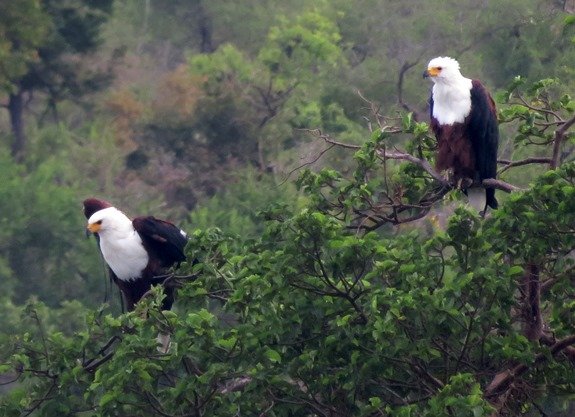African fish eagles

Author: Ivan Lätti
Photographer: Ivan Lätti
The African fish eagle, scientifically known as Haliaeetus vocifer, does not go unnoticed. The strong impression brought on by a sudden sighting or the call out of the blue on a quiet day, delivers a shot of instant exhilaration. It represents the best that nature has on offer in Africa; this magnificent bird revealing itself overhead or perched on a tall tree.
No wonder the African fish eagle is the national bird of at least four African countries, viz. Namibia, Zimbabwe, Zambia, and also now the young South Sudan. These birds live almost everywhere in South Africa, except parts of the Northern, Western and Eastern Cape.
White at the top and tail, chestnut belly and black wings, the mature fish eagle has everything over its less attractive young that has to moult a few times before achieving full film star status at the age of four or five years.
The birds live in pairs, not minding neighbours of their species nesting around 100 metres away at popular fish eagle haunts. The same stick nest is used by the couple annually. Various types of building material are added as may be available for maintenance, repairs or increasing nest size. Only up to three eggs are laid though. The eggs hatch after 44 days and the chicks fledge by 75 days.
The mother does most of the fledgling feeding. After their first flight, the young birds receive some parental care for another two months or so. The female is usually at least 1 kilogram heavier than the male.
African fish eagles do not only eat fish; delicacies such as the young of water birds like the lesser flamingo, the occasional monkey, crocodile hatchling, as well as frogs and insects form part of the diet. Rarely scavenging, carrion in the form of a dead fish may have to be considered in hard times (Maclean, 1993; Wikipedia; www.arkive.org).

